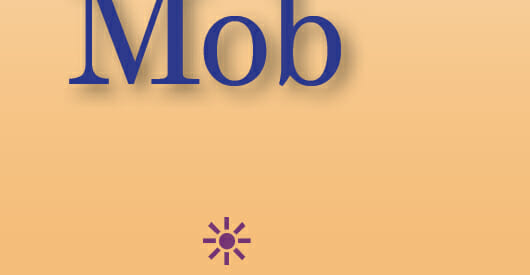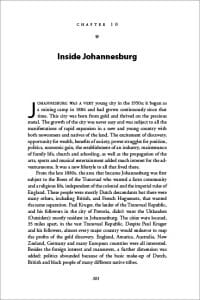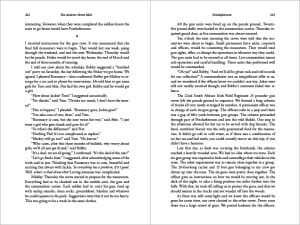
Case Study: The Andrew Street Mob by Brian Marais
Design brief: Create a book design and production method to enable an author to publish a personal memoir.
Constraints: The Andrew Street Mob was not designed to be a commercial project, so the economics of the production had to be strictly monitored.
Raw material: Author Brian Marais submitted an unedited manuscript of 227,000 words and the desire to have a book that looked and read well. The book tells the author’s firsthand account of growing up amid a group of 40 or more kids in Johannesburg, South Africa in the 1950s.
Production problem: Digital printing and print on demand make books like The Andrew Street Mob possible. Without this technology very few books of this nature would be published, since the cost would be prohibitive.
But the nature of the production also presents challenges. The very long manuscript could conceivably create a book of 700 pages or more depending on the size, layout and typography.
Unfortunately, digital printers charge by the page, while publishers can’t get away with pricing by the page. A 700 page softcover book at Lightning Source will cost $10.00 each to print. That doesn’t leave a lot of room for a profit, let alone a wholesale discount.
Challenge: Create a book that can be handled and read, that’s economical to produce, and that minimizes the cost to print as much as possible.
Solutions and Compromises
The author and I had several discussions to focus on what the aim of the publication was. We talked to editors and looked at the possibility of researching South African publishers for a tie-in with the World Cup.In the end it became clear that the publication would be more or less as a personal memoir. This decision allowed the author to move forward with a sympathetic editor in his family who would take care of polishing the manuscript.
Likewise, once the book was in proofs he found a friend to proofread and mark up the book before it went to press.
If he had been trying to create a commercial product, both of these important parts of the publishing process would have cost quite a bit more.
For the interior I created a long-narrative design that was both economical and readable. I used Adobe Garamond Pro, one of the most readable text faces in my collection. This typeface is also space-efficient, and I was able to fit the book into 586 pages. It would cost $8.50 to produce. Still not cheap, but with a bit more room for the publisher’s profit.You’ll notice from the pages here that the spreads were not all vertically justified or combed through for typographic refinement. On a book this long, the amount of time needed to fine tune the whole thing would have been significant. This was another conscious choice, guided by the original discussions we had, to minimize the expense of the book production.
Since cover design is largely positioning and packaging on commercial books, we were able to do away with most of the time and expense of design development. The finished cover was designed to be appropriate and professional.Conclusions
I’m a big fan of these kinds of books. Whenever I come across arguments about self-publishing that fall into black-vs-white arguments, I think of the many self-publishers I’ve known over the years and the many ways they have of publishing their books. Each one has their own reasons, their own ways of doing things. You can’t assume you know someone else’s aims or motivations.
The Andrew Street Mob is no exception. It’s a unique work that is destined to become a primary source for the experience of a particular time in a particular place. I don’t think we can have enough honest, direct and heartfelt testimonies to a specific human life. Our culture gains from the publication of these books, and I’m happy to have a hand in creating them.
Data
The Andrew Street Mob by Brian Marais on Amazon (affiliate link)
Marais Media International
ISBN: 978-0982673201
$19.95, 586 pages, 6″ x 9″ trade paperback





